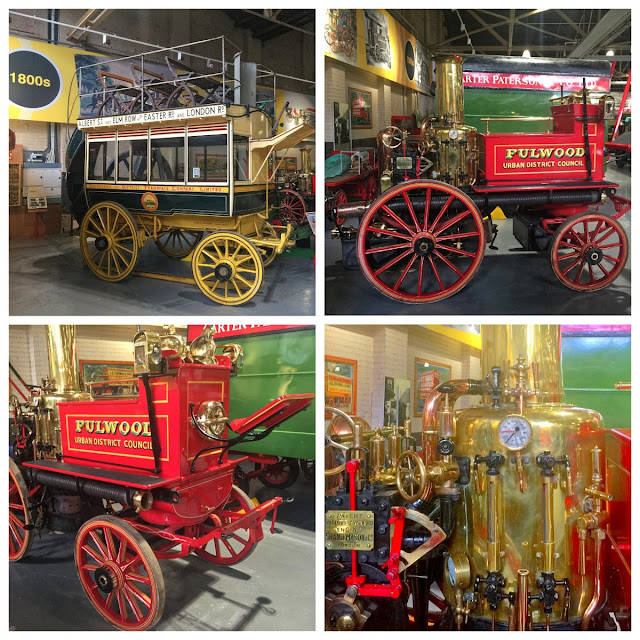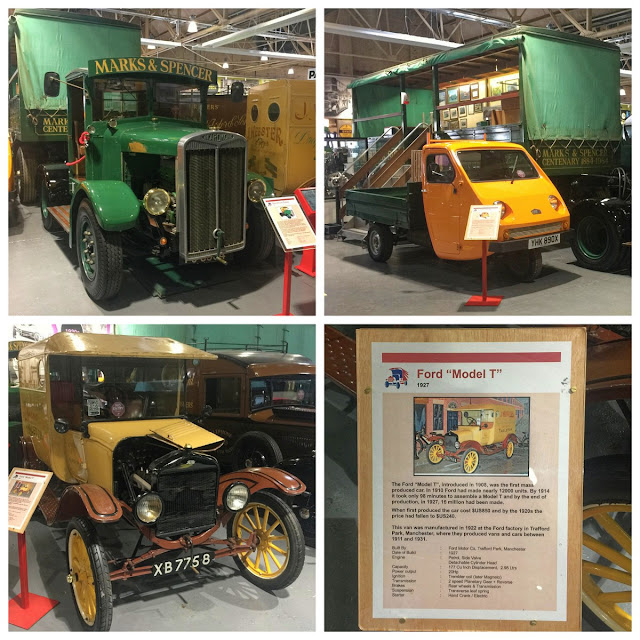Leyland - driven by the Industrial Power
Before we enter the kingdom of Leyland proper, you are encouraged to bow to the humble force of the horse. Before the invention of the mechanical horsepower and vehicles powered by all kinds of engines, nothing could be done on a larger scale without those noble creatures.
Leyland's Bobby the Iron Horse is a sculpture of a draught horse and cart, created by David Palmer and his team.
All this - is in the seemingly quiet and unassuming little town of Leyland in Lancashire, North West England. It goes back to the Anglo-Saxons, you know. But the Normans had built the first churches here, around thousand years ago. At least they build it so good that some of the remains are still in use as part of the whole church.
United Reformed Church (top left) - originally a Congregational Church designed in High Victorian Gothic style, inspired by the medieval cathedral builders.
St Andrew's Church (top right and bottom left) - an active Anglican parish church, Grade II listed building with the oldest part of the church - the chancel. The west tower was added in the 15th century. Still, pretty ancient. The rest is Victorian, meaning 19th century.
Leyland Town Cross and Well (bottom right) is at the centre of the oldest part of our little town of Leyland. Probably medieval, although the stone cross itself was restored in late 19th century, it certainly needed it.
In the town itself there are few historic buildings. One of them - 78 Towngate (top right) was originally a Police Station, later used for other purposes.
But the little town of Leyland primarily fame is for the bus and truck manufacturer Leyland Motors.
Between the 1950s and 1970s the company expanded and owned several British motor manufacturers: British Motor Corporation, Standard-Triumph and - Rover, culminating in the massive British Leyland company. The truck business still operates.
The Leyland clock is a memory to the 1931 Leyland Motors Clock advertisement adventure. They decided to place seven clocks by the important roads across the country, promoting the brand.
So, now we approaching the main reason of us being here (it does not - of course - encompasses the meaning of life). Lancashire Steam Motor Company started in 1896 - still is - the truck-building company. Traced back to two men - James Sumner and Henry Spurrier, who formed ‘The Lancashire Steam Motor Company’.
Leyland Motors Limited (later known as the Leyland Motor Corporation) was producing lorries, buses and other vehicles in the name of British brand, for many years. With the acquisitions of Triumph and Rover in the 1960s it undergone many changes throughout the years, to finally become the Rover Group in 1986.
And for this reason in the little town of Leyland there is the British Commercial Vehicle Museum. How absolutely marvellous it is, you are just about to have a glimpse.
The museum - formed in 1983 - (tickets from 4 pounds depends on the size ;-) - is in the building of the former Leyland Motor’s, dating back to the 1930s. For many years, lorries and buses had been inspected here before being purchased and taking their delivery job.
There are displays of antiquarian vehicles, early fire engines and other absolutely stunning examples of early engineering possibilities..
Note of caution:
You may probably feel overwhelmed and amazed by the variety and quantity of the trucks collected here. Be prepared.
Fowler B6 Showmans Engine is a steam-powered - road-going 'locomotive'. Very rare vehicle on the continent. It was designed to provide power and transport for a travelling funfair or circus, hence the name.
You can easily follow the signs of the exhibition timeline - and of the human/vehicle history timeline.
Here we go, for example:
1700s - HORSE-DRAWN - Horses have pulled carts and carriages since time immemorial. Until the 1700’s journeys were made over little more than cattle tracks.
1800s - STEAM DRIVEN - Early steamers had cart type wheels, black smoke and the noise.
1900s - PETROL / DIESEL - Faster journey. Roads improved. Lorries and buses started to carry bigger loads, greater distance were travelled.
2000s - HYBRID / ELECTRIC - Not as new an idea as you might think - as you may learn from the exhibition, but finally taking off.
So, the question is - what will be in
2100s? Anyone?
For now, let's get back to the glorious, fairy-like past (at least for some)
STEAM DRIVEN vehicles were very very noisy but elegant, in respect.
Firsts lorries and commercial vehicles.
The first affordable automobile, Ford Model T - available to middle-class Americans, produced from 1908 to 1927. The one in the museum had been manufactured in 1922 at the Ford factory in Trafford Park, Manchester, where they produced vans and cars between 1911 and 1931.
Leyland T45 (Popemobile) - one of four made for Pope John-Paul II's visit in 1982 (top right).
Television Detector van (bottom left) and an ambulance (bottom right).
And the lovely fire-truck that is so well known from the cartoons that probably everybody had seen - or its varieties - at some part of their childhood.
Such a unique treasure in such a little town of Leyland, hidden in the midst of Lancashire.
-------------------------------------------------------------
Sources:
https://www.britishcommercialvehiclemuseum.com/






















